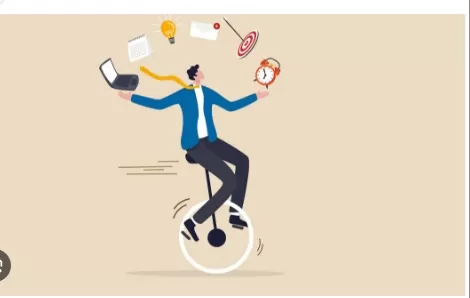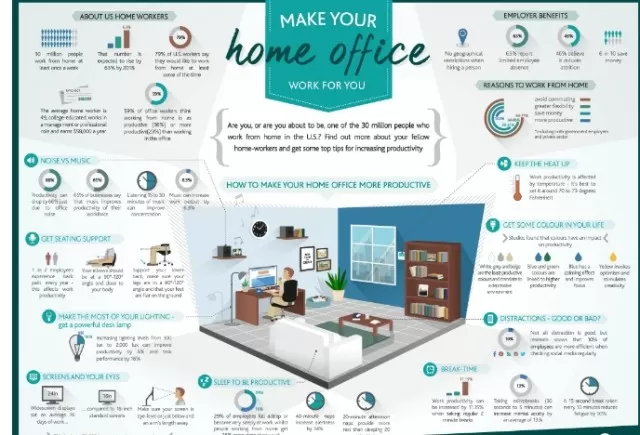Home Productivity Boosters: 5 Effective Strategies. Unleash the power of expert advice to revolutionize your productivity at home. These invaluable tips will empower you to accomplish more tasks in less time while fostering a greater sense of joy and fulfillment.
Discover the secrets shared by industry professionals, allowing you to optimize your work-from-home experience and unlock your true potential. Embrace these proven strategies and watch as your efficiency soars, transforming your home into a haven of productivity and satisfaction.
Maximizing Efficiency and Productivity while Working from Home

Working remotely has numerous benefits, such as eliminating the daily commute and providing freedom from the traditional office environment.
It even offers the opportunity to complete long overdue household tasks. However, without setting boundaries and practicing self-discipline, productivity may be compromised.
If you’ve transformed a cozy corner of your home into a workspace, consider implementing the following strategies to enhance your utilization of both your space and time effectively.
Create an Ideal Home Office Space
If maintaining focus while working from home is challenging, it may be due to the absence of a physical separation between your work area and living space.
According to design blogger Sofia Sakare, having a separate room dedicated to work is the optimal solution, regardless of how well you handle distractions. Select a room where you can comfortably spend several hours each day, but avoid choosing a room where you typically relax. To establish a functional and inspiring Home Office, consider the following:.
Furniture: Invest in ergonomic furniture, such as a supportive chair, to ensure comfort and reduce physical strain.
Choose a desk that suits your work style and provides ample space for your equipment and supplies.
Lighting: Optimize your lighting setup with adjustable options to suit different tasks and minimize eye strain.
Natural light is ideal, so position your workspace near a window if possible. Supplement with task lighting for darker hours of the day.
Inspiring Accessories: Surround yourself with accessories that motivate and uplift you.
Hang a family portrait, display an inspirational quote, or incorporate items that bring positive vibes and enhance your well-being.
Stylish Tech: Make your tech setup visually appealing by selecting sleek and modern devices.
This can help create a more aesthetically pleasing and organized workspace.
Pleasant View: Since you’ll occasionally look up from your monitor, position your desk to face a beautiful view if available.
If not, adorn your workspace with artwork or photographs that bring you joy and tranquility.
By creating a dedicated home office space that is comfortable, well-equipped, and aesthetically pleasing, you can improve focus, productivity, and overall work satisfaction while working remotely.
Embrace the LEAP Method for Action

Have you found yourself constantly putting off tasks, even though they’ve been lingering on your desk for weeks? According to motivational speaker Jim Rohn’s Law of Diminishing Intent, the longer we delay a task, the less likely we are to take action.
To combat procrastination and ignite progress, productivity expert Michael Hyatt suggests embracing the LEAP principle:.
Lean into the problem: Acknowledge the issue and recognize the need for change.
Confronting the task head-on is the first step toward overcoming procrastination.
Engage with the task: Dive deeper into the problem and actively seek solutions.
Educate yourself, gather resources, and seek guidance until you feel confident in how to resolve it.
Activate by taking an initial step: Overcome inertia by initiating action.
Start with a small, manageable task related to the larger goal. This first step will build momentum and propel you forward.
Pounce by taking the next step now: Avoid the temptation to delay further.
Seize the sense of urgency and tackle the next task immediately. By maintaining a proactive approach, you’ll prevent further procrastination and ensure continuous progress.
By following the LEAP principle, you can overcome procrastination and cultivate a sense of determination and urgency.
This approach will empower you to finally make substantial progress on those tasks that have been lingering on your to-do list.
Prioritize with MITs (Most Important Things)
With limited hours in a day, attempting to squeeze an extensive to-do list into that timeframe can quickly lead to overwhelm and hinder productivity.
To combat task overload, Leo Babauta, author and blogger at Zen Habits, suggests adopting a strategy of focusing on three Most Important Things (MITs) for your day. By narrowing down your priorities, you can achieve more with less effort and time. Here’s how to establish your MITs effectively:.
Select Three MITs: Identify the three most critical tasks or goals that need your attention for the day.
These should be the high-impact activities that will bring you closer to your work and personal objectives.
Balance Work and Personal Goals: Choose two MITs that are work-related and one that contributes to a long-term personal aspiration.
This approach ensures progress in both areas of your life and fosters a sense of fulfillment and balance.
Focus on Quality and Completion: Dedicate your focused energy and effort to accomplishing your MITs.
Avoid getting distracted by less important tasks and allocate your time strategically to tackle the selected priorities.
Celebrate Completion: Once you’ve finished your MITs, celebrate your accomplishments and recognize your progress.
This positive reinforcement will boost your motivation and inspire you to continue prioritizing effectively.
By implementing the MITs approach, you can streamline your tasks, maintain clarity, and achieve meaningful results.
Prioritizing these key activities will help you make progress on important work-related responsibilities while also nurturing personal growth and long-term goals.
.
Plan Your Year in One Hour

If you have ambitious projects in mind for the upcoming year, whether they pertain to work, home improvements, or personal goals, consider dedicating an hour to mapping out your plans.
This exercise will enable you to allocate projects to the appropriate months, ensuring focused attention and increased likelihood of success. Here’s a step-by-step approach inspired by productivity expert Mike Vardy:.
Prepare Three Sheets of Paper: Begin by gathering three sheets of paper to guide your planning process.
20 Minutes – Define Your Year-End Goals: Take the first sheet of paper and spend 20 minutes writing down three key words that represent what you aim to achieve by the end of the year.
These words should capture the essence of your overarching objectives.
20 Minutes – Brainstorm Major Projects: Utilize the second sheet of paper to brainstorm major projects you want to undertake throughout the next 12 months.
Allow yourself to think freely and capture any ideas that come to mind during this brainstorming session.
Assign Projects to Months: On the third sheet of paper, list the months of the year.
Dedicate the final 20 minutes to assigning each of the most compelling projects to an appropriate month. Consider factors such as seasonal considerations, project dependencies, and your personal availability.
By creating this visual roadmap for your year, you’ll gain clarity and accountability for your projects.
This exercise ensures that important endeavors are no longer relegated to the back burner or scheduled at inappropriate times. By aligning your projects with specific months, you increase your chances of maintaining focus and completing them throughout the year.
*The information is for reference only.